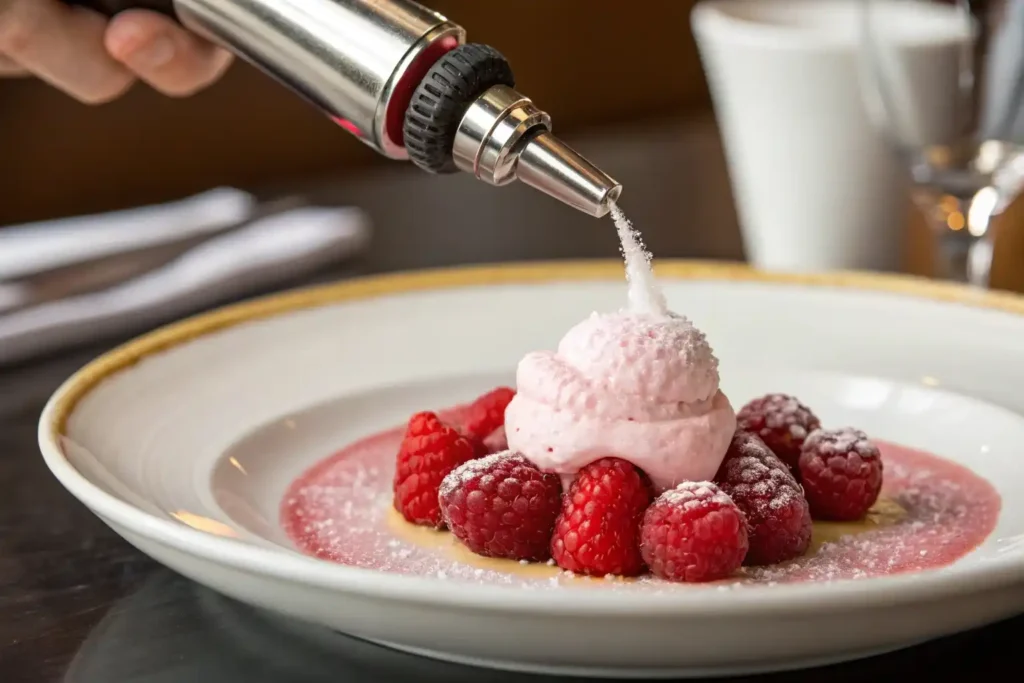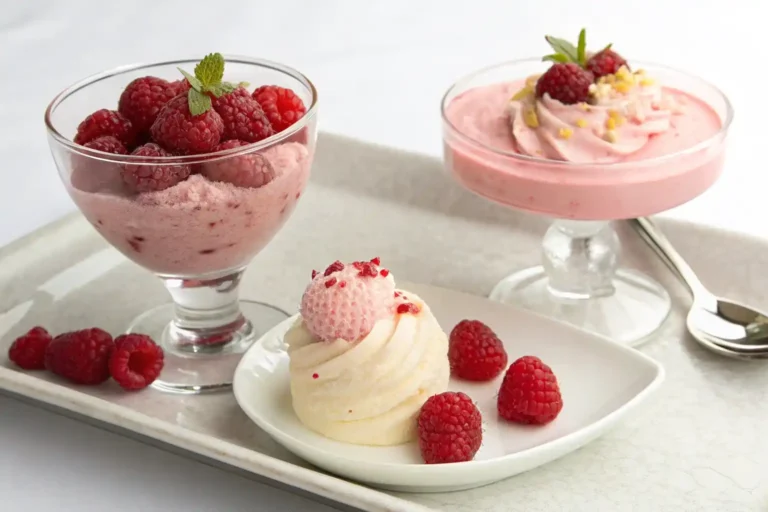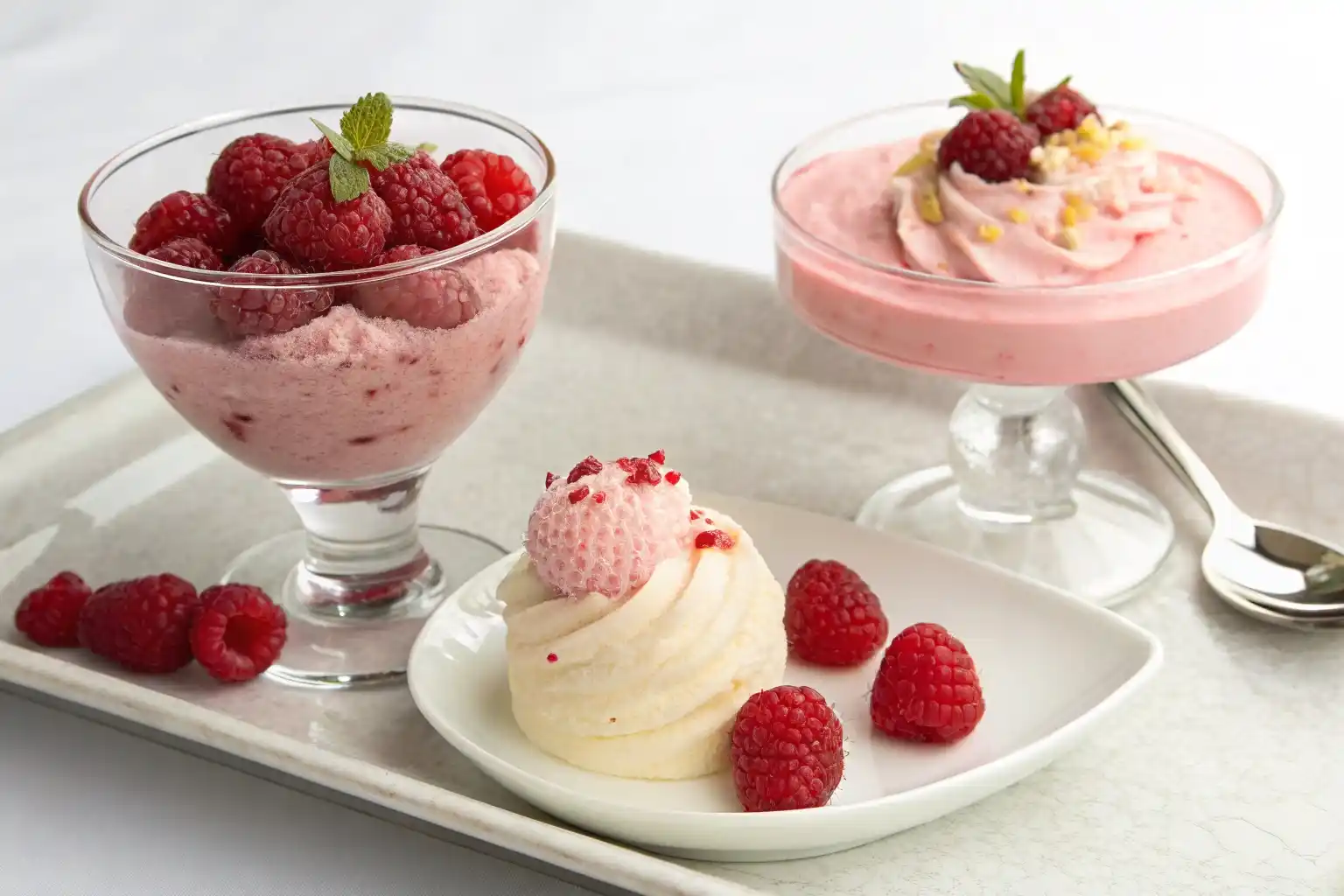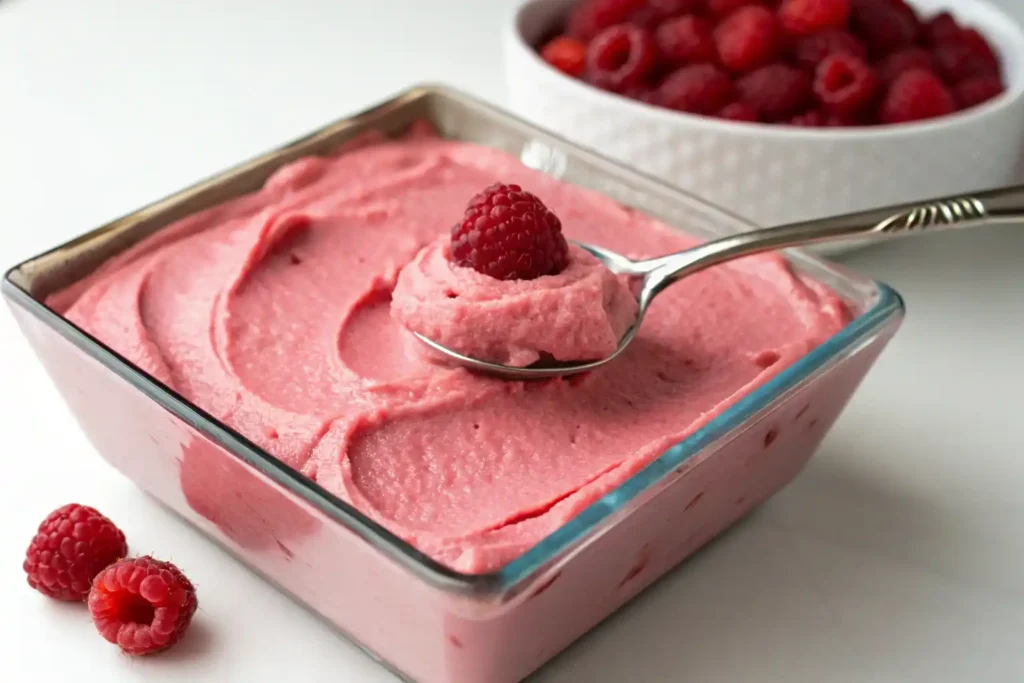A Trio of Light and Airy Delights
The culinary world is rich with terms that often overlap, leading to confusion, especially when it comes to desserts. Raspberry spuma, mousse, and espuma are three such terms that describe light, airy, and often fruit-based confections. While they share a common goal—to deliver a delightful, melt-in-your-mouth experience—they differ significantly in their preparation methods, ingredients, and resulting textures. This article will demystify these terms, helping you understand the unique characteristics of each and how they relate to the popular raspberry spuma that has become one of the hottest viral food trends.
Raspberry Mousse: The Classic Creamy Cloud
Definition and Characteristics
Raspberry mousse is a classic French dessert known for its rich, creamy, and airy texture. The word “mousse” itself means “foam” in French, accurately describing its light consistency. Traditional mousses typically rely on a combination of three main components:
1.Flavor Base: Often a fruit puree (like raspberry), chocolate, or coffee.
2.Aerating Agent: Whipped egg whites (for a lighter mousse) or whipped cream (for a richer, denser mousse), or sometimes both.
3.Stabilizer: Gelatin, agar-agar, or sometimes chocolate (which solidifies when chilled) is often used to give the mousse structure and prevent it from collapsing.
Preparation Method
The preparation of raspberry mousse usually involves:
1.Creating a raspberry puree, often sweetened and sometimes cooked.
2.Whipping egg whites to soft or stiff peaks, or whipping heavy cream until light and fluffy.
3.Gently folding the aerating agent into the raspberry base, often with a dissolved gelatin mixture, to maintain the airy texture.
4.Chilling the mixture until set, which allows the gelatin or other stabilizers to firm up.
Key Differentiators
Creaminess: Generally creamier and denser than spuma due to the inclusion of whipped cream or a higher proportion of egg yolks (in some recipes).
Stability: More stable and holds its shape better due to gelatin or other stabilizers.
Ingredients: Often includes cream, egg yolks, and gelatin, which are typically absent in the simplest spuma recipes.
Raspberry Spuma: The Viral 3-Ingredient Wonder
Definition and Characteristics
Raspberry spuma, as popularized by recent social media trends, is a minimalist dessert characterized by its incredibly light, ethereal, and foamy texture. The term “spuma” is Italian for “foam,” similar to mousse. However, the viral version of raspberry spuma is distinct in its simplicity and has earned its place among the most popular healthy summer desserts due to its minimal ingredients and naturally light texture.
Preparation Method
The most common method for raspberry spuma involves just three ingredients:
1.Fresh Raspberries: Provide the primary flavor and some natural acidity.
2.Egg Whites: The sole aerating agent, whipped to incorporate air.
3.Granulated Sugar: Sweetens and helps stabilize the egg white foam.
The basic raspberry spuma recipe demonstrates this simplicity perfectly, though variations have emerged including vegan alternatives using aquafaba and more refined cooked syrup methods for enhanced stability and food safety.
These three ingredients are typically combined in a food processor and blended until the mixture transforms into a pale pink, cloud-like foam. The magic lies in the rapid incorporation of air and the natural emulsifying properties of the egg whites combined with the fruit acids.
Key Differentiators
Simplicity: Uses minimal ingredients (often just 3) and a straightforward blending process.
Texture: Exceptionally light and airy, almost like a flavored cloud. It tends to be less stable than mousse and is best served immediately.
No Stabilizers: Relies on the natural properties of egg whites and fruit acids for its structure, typically without gelatin or cream.
Flavor Profile: A very clean, intense raspberry flavor due to the lack of other strong ingredients.
Raspberry Espuma: The Modern Culinary Foam
Definition and Characteristics
The term “espuma” (Spanish for “foam”) in modern culinary contexts typically refers to a light, airy foam created using an iSi siphon (also known as a cream whipper or culinary whipper). This technique is a hallmark of molecular gastronomy, allowing chefs to create foams from virtually any liquid, hot or cold, savory or sweet.
Preparation Method
Creating a raspberry espuma involves:
1.Liquid Base: A flavorful liquid, such as raspberry puree, often combined with a liquid (like milk or cream) and sometimes a fat (like mascarpone).
2.Gelling Agent/Stabilizer: Often a small amount of gelatin, agar-agar, or another hydrocolloid is added to the liquid base to help stabilize the foam.
3.Pressurized Gas: The mixture is placed into an iSi siphon, which is then charged with nitrous oxide (N2O) cartridges. The gas dissolves into the liquid under pressure, and when dispensed, it expands, creating a stable foam.
Key Differentiators
Equipment: Requires specialized equipment (iSi siphon and N2O cartridges).
Versatility: Can be made from a wider range of ingredients (sweet or savory, dairy or non-dairy) and served hot or cold.
Texture: Can range from a delicate, ephemeral foam to a denser, more stable foam depending on the ingredients and stabilizers used.
Stability: Generally very stable due to the gelling agents and the pressurized dispensing method.
Side-by-Side Comparison
| Feature | Raspberry Mousse | Raspberry Spuma (Viral) | Raspberry Espuma (iSi Siphon) |
| Key Ingredients | Fruit puree, whipped cream/egg whites, gelatin | Raspberries, egg whites, sugar | Liquid base (puree, cream), stabilizer, N2O gas |
| Preparation | Whipping, folding, chilling; often complex | Blending in food processor | Blending, straining, charging in iSi siphon |
| Texture | Creamy, airy, stable | Very light, ethereal, foamy; less stable | Light to dense foam, depending on ingredients |
| Equipment | Mixer, bowls, sometimes double boiler | Food processor | iSi siphon, N2O cartridges |
| Stability | High, holds shape well | Low, best served immediately | High, holds shape well |
| Flavor | Richer, often complex | Clean, intense fruit flavor | Varies widely based on base liquid |
| Typical Use | Standalone dessert, cake filling | Quick, refreshing summer treat | Garnish, topping, modern culinary element |

Conclusion: Choosing Your Raspberry Delight
While raspberry spuma, mousse, and espuma all offer delightful, airy textures, they cater to different culinary needs and preferences. The viral raspberry spuma is perfect for those seeking a quick, simple, and incredibly light dessert that fits beautifully into healthy summer desserts collections. Raspberry mousse provides a richer, more stable, and classic indulgence. And raspberry espuma, with its reliance on specialized equipment, opens up a world of modern culinary experimentation.
Understanding these distinctions allows you to appreciate the nuances of each and choose the perfect “foam” for your next culinary adventure. Whether you opt for the simplicity of the basic spuma recipe, explore vegan alternatives, try the enhanced cooked syrup method, experiment with frozen variations, the classic elegance of mousse, or the innovative flair of espuma, you’re sure to enjoy a refreshing and delicious raspberry treat. With proper fruit selection using our summer berries guide and attention to food safety considerations, any of these preparations can become a standout dessert in your repertoire.
Print
Raspberry Spuma vs Mousse vs Espuma
Explore the key differences between raspberry spuma, mousse, and espuma—from classic French techniques to viral 3-ingredient trends and modern culinary foams using siphons.
- Total Time: 10 minutes (plus chilling for mousse)
- Yield: Varies by method
Ingredients
- Fresh raspberries or raspberry puree
- Egg whites
- Granulated sugar
- Heavy cream or whipped cream (for mousse)
- Gelatin or agar-agar (for mousse or espuma)
- Optional: mascarpone, milk, or flavor infusions
- Tools: food processor, mixer, or iSi siphon with N2O cartridges (for espuma)
Instructions
- For Raspberry Mousse: Create a raspberry puree and sweeten it. Whip cream or egg whites separately. Dissolve gelatin if used. Gently fold everything together and chill until set.
- For Raspberry Spuma: Blend fresh raspberries, egg whites, and sugar in a food processor for 3–4 minutes until pale and foamy. Serve immediately.
- For Raspberry Espuma: Mix raspberry puree with cream and a stabilizer like gelatin. Strain, pour into an iSi siphon, charge with N2O, and dispense as needed for a stable foam.
Notes
Mousse is richer and more stable due to cream and gelatin. Spuma is ultra-light, best served fresh, and uses no stabilizers. Espuma requires a siphon but offers versatility in texture and flavor. Choose based on desired equipment, texture, and prep time.
- Prep Time: 10 minutes
- Cook Time: 0 minutes
- Category: Dessert
- Method: Blended / Whipped / Pressurized
- Cuisine: Fusion
Nutrition
- Serving Size: 1 portion
- Calories: 120
- Sugar: 10g
- Sodium: 15mg
- Fat: 4g
- Saturated Fat: 2g
- Unsaturated Fat: 2g
- Trans Fat: 0g
- Carbohydrates: 14g
- Fiber: 3g
- Protein: 3g
- Cholesterol: 10mg
Keywords: raspberry spuma, raspberry mousse, raspberry espuma, dessert foam, whipped dessert


